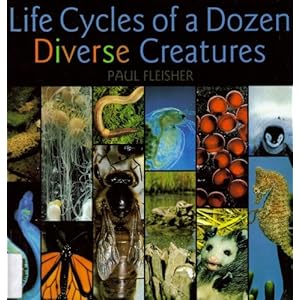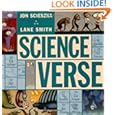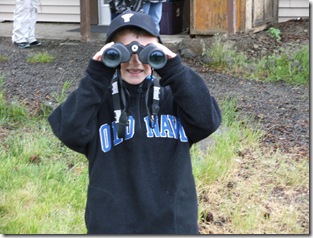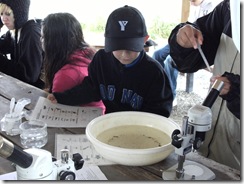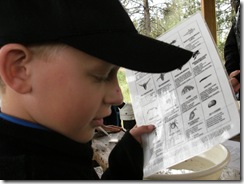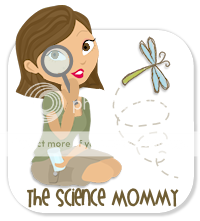This is a repost of some fun ways to interest your Kid Scientists in observing the world around them...

Can you see the nest in the tree? Tucked into the fork of a branch right in the middle? I couldn’t see baby birds, but as I stood under the tree, I could hear them chirping. There is a great diversity of living things right in our neighborhoods for Kid Scientists to discover. Here are some ways to encourage Kid Scientist observations…
Digital Nature Walk – Hand your camera to your Kid Scientist during your walk. Challenge her to look for evidence of animals as well as the animals themselves. She might find a train of ants, a nest, tracks in the mud or lady bugs in the garden. Your Kid Scientist can collect her observations with pictures. If she’s really adventurous, she could create a Field Guide for your neighborhood.
Nature Walk Scavenger Hunt – For those Kid Scientists who need help slowing down and observing write a Scavenger hunt list on an index card to take on your walk (if your Kid Scientist can’t read you can read the list to him or enlist an older sibling to be his partner). Include things you know he’ll find easily as well as a couple real challenges…a robin, a wild flower, a spider web, a nest, animals tracks, ducks…
ABC Nature Walk – As you’re walking find things that begin with each letter in the alphabet…ants, bumble bee, columbine, daisy…this is way for your Kid Scientist to learn more specific names for things as well. If following the alphabet is too much of a challenge, you can turn it into ABC / I Spy, “I see something that starts with L” “Lady bug”
Nature Walk 1 2 3 – As you walk, ask your Kid Scientist to count what they’re seeing. “How many birds will you see before we get to the corner?” “How many daisies are on this plant?” “How many dragonflies do you see?”
Amazing Things – Tell your Kid Scientists that at the end of your walk everyone will get to share an Amazing Thing they saw while walking home. Giving your Kid Scientist a chance to walk with wonder, looking at everything, encourages creativity and close observation. Once you’re home, it’s interesting to hear what they thought was amazing.
Sounds of Nature – Have your Kid Scientists sit or lay down with their eyes closed for one minute – just listening. At the end of the minute, ask them to share what they heard. If bird sounds are clear, ask Kid Scientists if they can figure out how many birds are making the sounds.
The Science Mommy would love to hear about your Neighborhood Nature Walk










